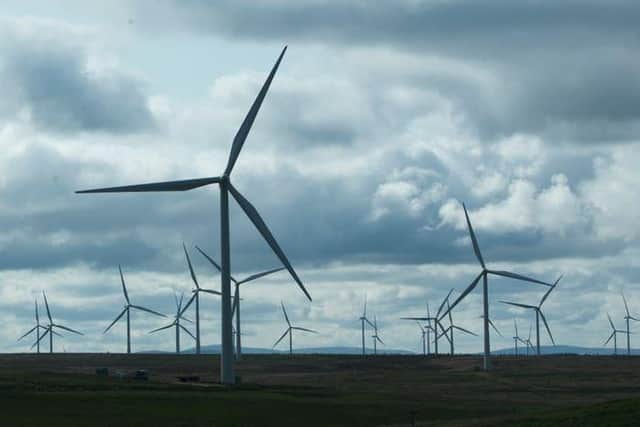Arun is generating almost 100 gigawatts per hour of electricity each year
and live on Freeview channel 276
Environmental groups have urged the Government to expand on the success of a significant rise in green energy across the UK, amid vital UN Cop26 climate talks in Glasgow.
Figures from the Department for Business, Energy and Industrial Strategy show 94,819 megawatts per hour (around 95 gigawatts) of renewable electricity were generated in Arun in 2020.
Advertisement
Hide AdAdvertisement
Hide AdThis was slightly more energy than the 95 GWh produced the year before, and more than double the amount produced in 2014 – the earliest year of data available.


Across the UK, 134,600 GWh of renewable energy was generated in 2020 – a 13 per cent rise on the year before, and above the nine per cent increase from 2018 to 2019.
Renewables outstripped fossil fuels for the first time last year, representing 43 per cent of total generation – compared to 37 per cent in 2019.
Friends of the Earth said this is good for both the planet and the economy, as renewables are now the cheapest power source.
Advertisement
Hide AdAdvertisement
Hide AdMike Childs, head of policy at the environmental campaign group, said: “However, far too much of our energy still comes from climate-wrecking coal, gas and oil, and this has to change.
“The Government must rapidly accelerate our use of renewables to end our reliance on dirty fossil fuels.”
Of the nine different types of energy in the figures, offshore wind grew at the fastest pace and is now responsible for a greater share of energy (30 pe cent) than any other producer – followed by onshore wind (26 per cent) and biomass and waste (24 per cent).
Climate think tank Ember said huge falls in costs means the growth in offshore wind power is set to go "parabolic" in the coming months.
Advertisement
Hide AdAdvertisement
Hide AdPhil MacDonald, chief operating officer at the organisation, added: "But the Government is still missing the opportunity of cheap onshore wind, and not doing enough to explore earlier-stage technologies like geothermal and tidal.
"To ensure a speedy phase-out of expensive imported fossil gas, there needs to be a stronger commitment to support innovative energy storage."
The biggest producer of energy in Arun last year was solar power, which generated 66 GWh – 69 per cent of the total.
This was followed by anaerobic digestion, which is the breakdown of organic material by micro-organisms to produce biogas (16 per cent), and landfill gas, which is created by the decomposition of organic materials in a landfill – which generated a further nine GWh (10 per cent).
Advertisement
Hide AdAdvertisement
Hide AdEnergy Secretary Kwasi Kwarteng said wind power is a 'British success story' and a key part of the Government's aim to decarbonise the UK’s whole electricity system by 2035.
He added: "This year alone we’ve attracted five new offshore wind factories to the UK, bringing jobs and investment to our industrial heartlands.
“We are applying this successful model to nuclear, hydrogen, solar, and other renewables so they become the obvious and affordable choice, helping to end our reliance on expensive, volatile natural gas.”